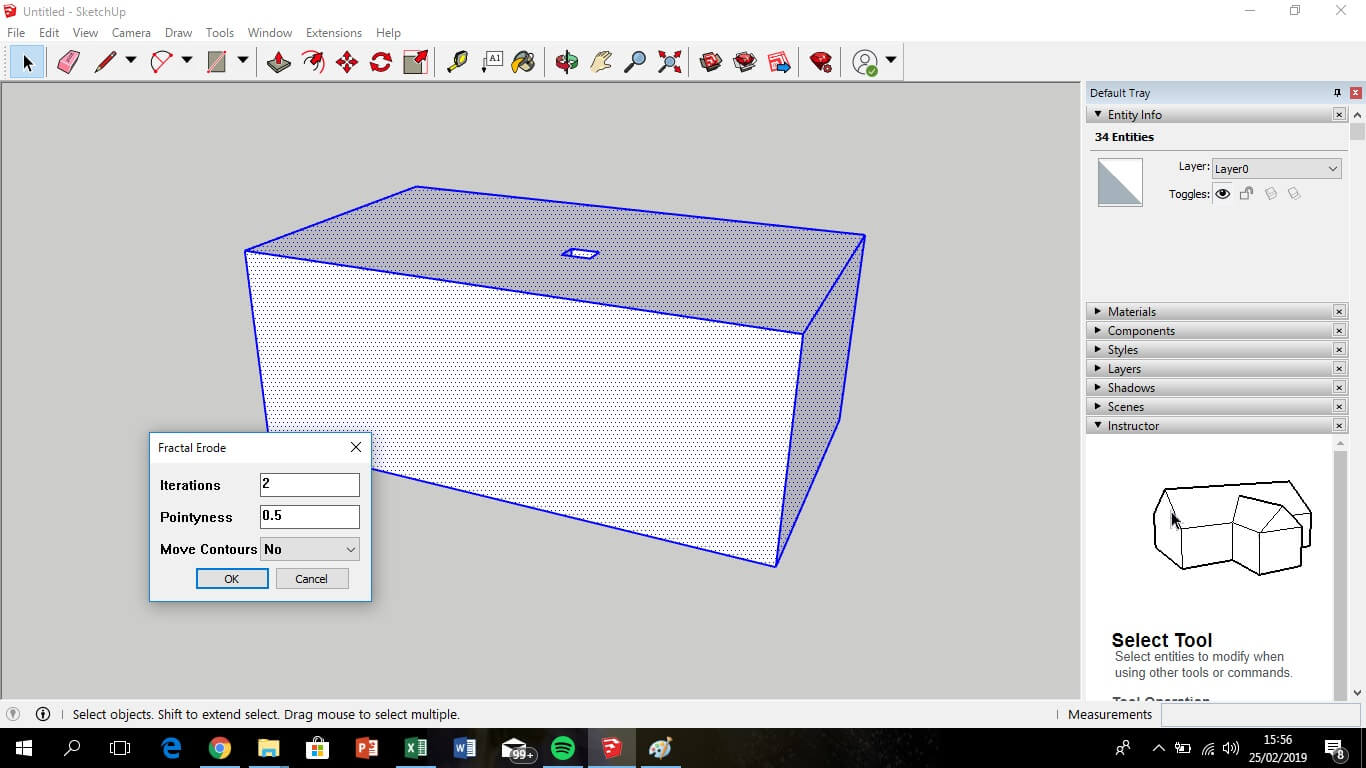

- #Sketchup make hollow object solid install#
- #Sketchup make hollow object solid software#
- #Sketchup make hollow object solid download#
- #Sketchup make hollow object solid free#
#Sketchup make hollow object solid software#
Since I work mainly with the Ultimaker 2s, I imported my "wall thickness" STL file into Cura, the 3D print software for the Ultimaker 2. Our main 3D printers are Ultimaker 2s, Makerbot Replicator 2s and Up Plus. We have a number of different types of 3D printers in Fablab SP. I created 3 simple 20mm x 20mm x 20mm cubes in SketchUp, with wall thicknesses of 1.0mm, 2.0mm and 3.0mm, checked the models using Solid Inspector, then exported them to STL format. My first test for 3D printing was to determine the optimal wall thickness for my 3D models. Solid Inspector also checks for and fixes these errors. When designing 3D models, a common error is to have some of the faces pointing inwards and others pointing outwards. Another alternative is to export the model to STL and check for manifold errors with Meshmixer or NetFab.Īnother point that is very important is that all vertices/faces must be oriented correctly, i.e. Solid Inspector makes inspecting the 3D model for closed surfaces and fixing problems very simple. This is where the Solid Inspector plugin comes in very handy. Point 1 is also known as the manifold or "watertight" test - all faces of the 3D model must be closed. Points 1 & 2 above are very important when designing models for 3D printing. Reduce material to reduce cost - especially true when using commercial 3D print service Know the print material specifications & limitations Use plugins to work faster (see above for useful plugins) Model parts as separate components & use Outer Shell to combine Increase circle/arc segments to get smooth curves Scale up by 100 (or 1000) to make small parts Models have to be solid (all faces closed) to be 3D printable The 8 Tips article lists some very important points when creating models for 3D printing: SketchUp Tutorial for 3D Printing - from All3DP.Basic Workflow for 3D Design in SketchUp - Instructable.Some of the tutorials that I've used are: There are a number of good tutorials and references to using SketchUp and using SketchUp for 3D printing.
#Sketchup make hollow object solid install#
To install an extension in SketchUp, select Window/Preferences/Extensions and click on the Install Extension button, then select the extension to install. The CADspan plugin contains a set of tools to help the user make the SketchUp model 3D printable, such as organizing layers to separate sections, unsmooth the model or plan tolerances. The Solid Inspector extension has the ability to automatically repair many manifold problems. The first 2 extensions allows the use to export SketchUp skp models to STL files for 3D printing. Some of the most popular SketchUp extensions for 3D printing are:
#Sketchup make hollow object solid download#
To download SketchUp extensions, you must be a member. SketchUp supports extensions written in Ruby, available from the Extensions warehouse.

After trying for a while, I decided to give it up and revert to the versions on Windows and OSX, which ran without any problems. I tried installing the 64-bit version of SketchUp Make on my Ubuntu machine using Wine, but could not get it to run.
#Sketchup make hollow object solid free#
SketchUp is available as a free version (SketchUp Make) and a paid version (SketchUp Pro), available in both 32- and 64-bit release. Unfortunately, there are no versions for Linux, though earlier releases could run under Wine. The current release is SketchUp 2016 and is available on both the Windows and OSX platforms. I had previously used SketchUp back in 2014, to make simple 3D models, so I thought this would be a good opportunity to revisit the software and see what additional features SketchUp has added since then. To create the 3D models for 3D printing, I decided to use SketchUp. 3D scan an object (and optionally print it)įor extra credits, students could make our own 3D scanner. Design and 3D print an object (small, few cm) that could not be made subtractively Test the design rules for our 3D printer(s) - group project There are 3 parts to the assignment for this week: Exercise 05 - 3D Scanning & Printing Assignment


 0 kommentar(er)
0 kommentar(er)
